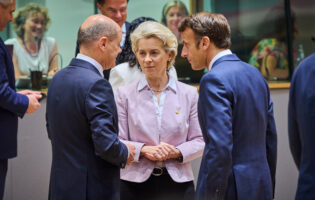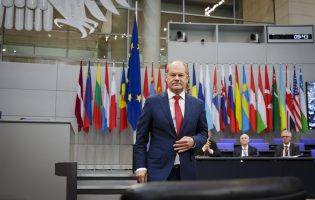Strategic Change and Civil-Military Conflict by Gerlinde Groitl
U.S. civil-military relations have been troubled ever since the end of the Cold War. The nation’s highest-ranking military officers have regularly clashed with their political superiors in the national security decision-making process. Even a casual observer of U.S. defense issues may remember Bill Clinton’s notoriously strained relationship with the military in the 1990s. From 2001 onwards, George W. Bush’s agenda of military transformation as well as the war on terror provoked even more civil-military conflict. The frustration erupted in the so called “revolt of the generals” in 2006, when several prominent retired generals publicly called for then Secretary of Defense Donald Rumsfeld’s resignation or firing. The high level of stress persisted during Barack Obama’s first term in office. It became evident, for example, in the 2009 Afghanistan strategy reviews as well as the firing of General Stanley McChrystal in 2010. Since democracies usually enjoy relatively harmonious civil-military relations, scholars quickly asked what was “wrong” in the United States’ case.
In her recent book, Strategic Change and Civil-Military Conflict (Strategischer Wandel und zivil-militärischer Konflikt), Gerlinde Groitl analyzes the reasons for the high level of civil-military conflict in the United States after the Cold War. While most studies interpret the phenomenon as a problem of civilian control, Groitl offers an alternative perspective. She focuses on the interaction of political and military leaders in the decision-making on the use of force from 1989 to 2013. Using a neoclassical realist framework, Groitl shows that both military and civilian leaders develop their own conceptions of how to use military force. As long as there is an established and successful civil-military consensus on when and how to use force, civil-military relations will remain in harmony. Yet, the United States lost that very consensus at the end of the Cold War and has so far been unable to find a new one. The past twenty-five years have been an era of continuing strategic change as the United States pursued its interests in the unipolar international system. Every few years, the military had to adapt to new political demands and new challenges in the field. The Clinton administration pushed the reluctant Pentagon—that clung to the notion of “all-or-nothing”-warfare—toward extended peacekeeping and nation-building missions in the 1990s. In the early 2000s, the Bush administration pursued a high-tech transformation of the military and an ambitious war on terror. Wars were now supposed to be fought quickly with “transformational” strategies and a light-footprint approach. When these ideas failed in Afghanistan and Iraq, a new counterinsurgency (COIN) school emerged from 2006 onward. COIN supporters viewed the war on terror as a complex global counterinsurgency and called for long-term civil-military COIN campaigns. Yet, only a few years later, the Obama administration questioned the appropriateness of COIN in the fight against terrorism, downgraded its relevance, and decided to rebalance to Asia and the Pacific.
Civil-military conflict is a natural byproduct of these fast and wide-ranging strategic changes. This type of conflict is particularly likely under the conditions of unipolarity, when the sole superpower is forced and seduced to use its military in a large number of diverse and ambitious missions around the globe. The study concludes that the real challenge for the United States is how to successfully plan and manage its military interventions—and not, as other authors imply, how to reign in the generals and admirals in the decision-making process.








